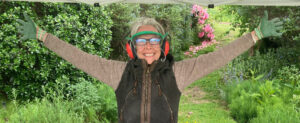
Home » Journal Articles » Thoughts & Opinions » FInding My Way to Stone – Nov/Dec 2006
I consider myself a contemporary/conceptual artist. I was trained in an academy as well as two major universities by well known New York artists. There are only a hand full of artists in galleries that are carving in stone, as galleries tend to think of stone as heavy and breakable. It seems as though carving stone is out of step with the times. So, how does a conceptual artist find her way into to the “classical” world of stone carving? The answer to that is: the long way.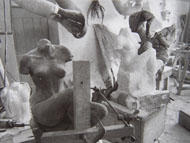
While studying at the Pennsylvania Academy of Fine Art I choose the path of sculpture early on. I carved wood, modeled clay, welded steel, made plaster moulds and so on. One day a professor looked over my shoulder while I was carving away at a chunk of cherry wood. “You should carve in stone, it’s much easier,” he said. Easier is good. When I showed up in the stone carving area on the second floor of a walk up, I was given a piece of stone, a hammer and a chisel. My introduction was to just whack away on it. Another problem was the stone. It was an old marble door step and very hard. This didn’t seem easy to me, I lasted three days.
It took me five years to complete my bachelor degree, since I lost some credits by transferring to Temple University’s Tyler School of Art after my third year. I then left the United States and went to Italy.
In Rome, I sought out a family friend to get an orientation. This sculptor lived in a garret just down the road from the famous Spanish Steps. He showed me the bronze work he was doing and I produced letters of introduction from the Academy and a puny portfolio. He said I’d never find what I was looking for in Rome; I needed to go to Pietrasanta. He rattled of a list of merits of this tiny town; its stone carving studios, bronze foundries, super sized kilns for clay work, Mosaic studios, two bars and lots of foreigners. “You could speak english the whole time.” I’d have no need to bother with learning the Italian language.
My jaw may have dropped slightly, but I tried to hide my dismay. I don’t think he understood me or my mission. I needed Rome. I needed its Vatican Collection, its opera, theater, churches and schools. Most of all I needed Italians and their language.
I stayed right there in Rome. While soaking up its marvels, I met an American sculptor named James who was teaching art classes at an American grade school. He worked in stone and had started carving in Pietrasanta. After seeing each other for sometime he asked if I wanted to go there with him. He was in need of tools and that was the source. I felt safely ensconced in one of the most fascinating cities in the world, and I knew no tiny town could lure me away. A weekend trip with this pretty boy would be just that, a trip.
Pietrasanta is about 30 miles north of Pisa. The name means holy stone, which refers not to marble, but to the large stone at which people knelt for beheading. There is a plaque in the central piazza claiming Michelangelo slept here while making some sort of arrangement with a client for stone. Since then, the town has been a place where stone is carved. In the early 50’s Henry Moore put the town on the map with the carving of his Reclining Figure for the UNESCO headquarters in Paris. This work took two years to complete and brought the world press to the studios of Pietrasanta. Today there are hundreds of studios between here and Carrara, and artists from all over the world come to work in its many art factories.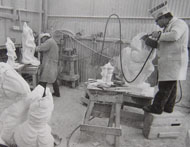
But I knew myself as an artist. The planning that went into stone carving was just not for me. When it comes to art, I usually jump in with both feet, trusting in some kind of eventual, positive outcome. There was a lot of very serious stone carving going on in Pietrasanta. There were miles of stone moving like rivers, and silky white figures everywhere whose sensual cold stare taunted my reactionary feminist attitude.
My friend and I ended up at a studio where Issamu Noguchi’s piece for the Venice Biennial was being fabricated. Giorgio Angelini’s studio was in Ripa, a town well off the beaten path. Noguchi’s piece, all white marble, was a monumental slide. You entered through a set of stairs on one side, climbed to the top and slid down polished marble to exit on the opposite side. Noguchi’s sculpture was fun, putting a smile on even the most hardened of art critic’s faces. But, it was huge and being carved by some of the area’s best artisans. I still could not see myself doing this.
All of the studios in and around Pietrasanta have work space for artists. The spaces at Giorgio’s were an ample 10’ square and there were 5 or 6 artists in residence. I was drawn to one space in particular because it was so very different from anything I’d seen so far. This studio was the kind of place I could work in.
There were no pantographs there; no copying going on, each work was the result of laborious play time with the stones. Stones were being inserted into larger freshly quarried blocks of marble using words and symbols creating an enigma of cities and cultures that do, and don’t, exist. For the first time I saw playfulness applied to this precious material, producing a serious and thought provoking piece. I wanted to stay and play. The artist was nowhere in sight but the workers told me he was Canadian and had a partial paralysis in his hands. His name was Daniel Couvreur, and when we finally did meet a few years later we became great friends. Daniel changed my life and the way I thought about stone.
I returned to Rome, packed up and moved. I spent the next decade plus in that tiny town with its foreigners and two bars. I still consider myself a contemporary /conceptual artist, but since stone carving is a reactionary, radical thing to do, I have no problem seeing my self as part of the tradition.


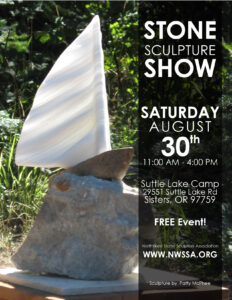
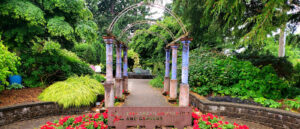
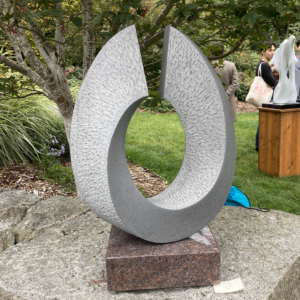
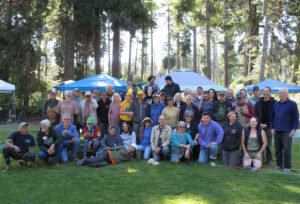



We need some kind of descriptive text here.